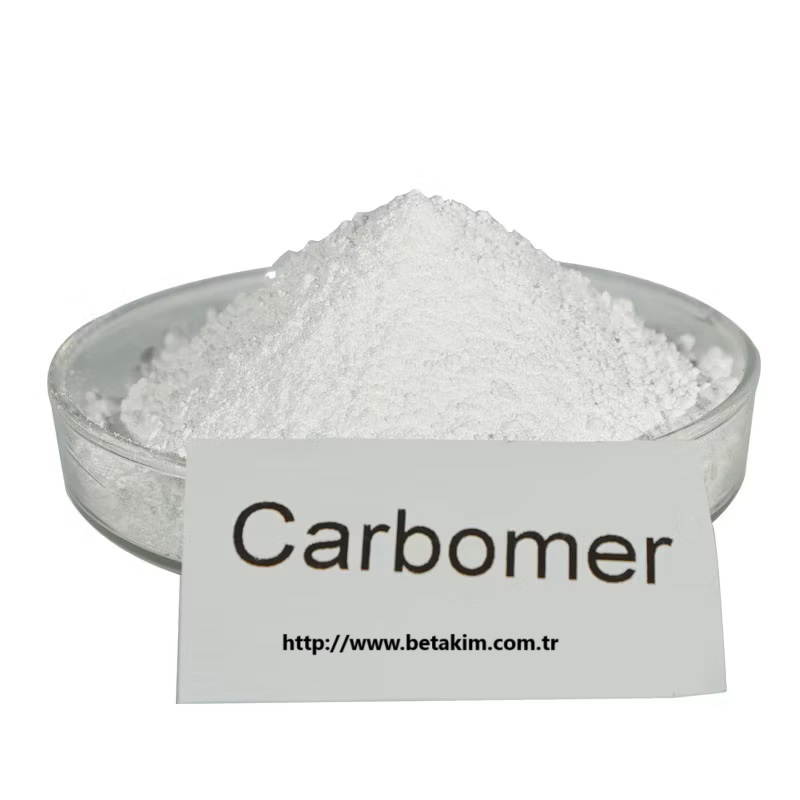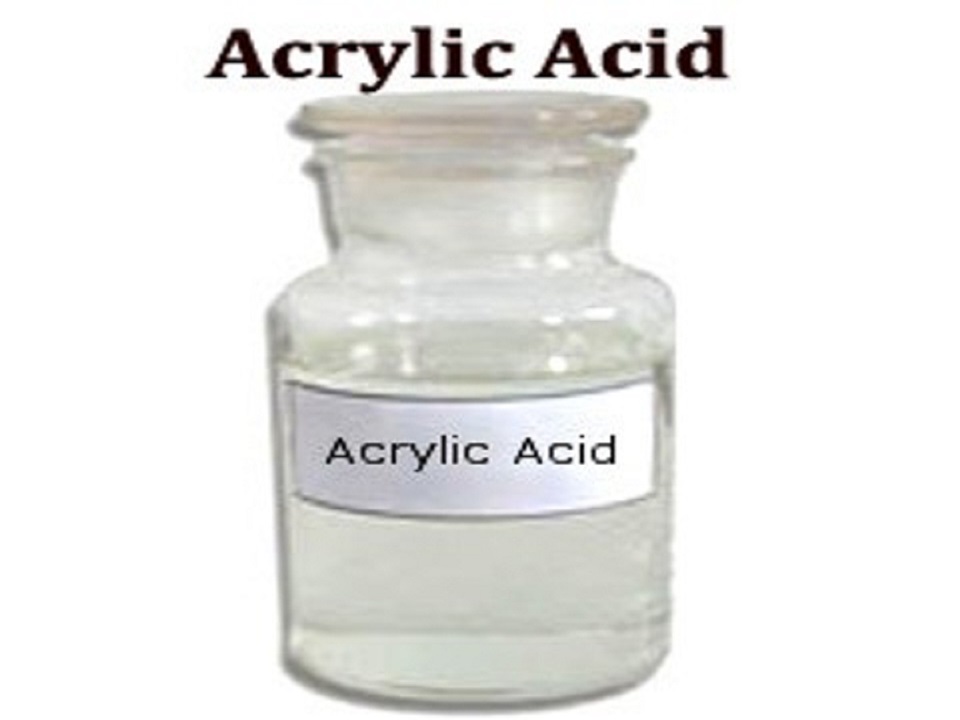We unleash your business potential by maximize the business innovation.
Send EmailAcrylic acid Polymers, PAA, 940, Carbopol, Carbomer 910, Polyacrylic Acid, Fluorosulfuric acid, ACRYLIC ACID POLYMER, 9003-01-4 , 9007-20-9
Acrylic acid Polymers
CAS: 9003-01-4 ; 9007-20-9
Molecular Formula: C84H112O56
Names and Identifiers
| Name | Acrylic acid Polymers |
| Synonyms | 940 PAA Carbopol Carbomer 910 CARBOPOL(R) 940 CARBOPOL(TM) 934 CARBOPOL(TM) 941 CARBOPOL(TM) 910 acrylicacid,poly Polyacrylic Acid CARBOPOL(TM) 940 Poly(acrylic acid) Fluorosulfuric acid Acrylic Acid glacial ACRYLIC ACID POLYMER Carboxypoly-methylene Acrylic acid Polymers Acrylic polymer resins Polyacrylic Acid (PAA) Propenoic acid polymer Poly(acrylic acid)-2000 poly(1-carboxyethylene) Propenoic acid, homopolymer 2-Propenoic acid, homopolymer Propenoic acid, polymers, homopolymer |
| CAS | 9003-01-4 9007-20-9 |
| EINECS | 618-347-7 |
| InChI | InChI=1/C3H4O2/c1-2-3(4)5/h2H,1H2,(H,4,5) |
| InChIKey | WLAMNBDJUVNPJU-UHFFFAOYSA-N |
Physico-chemical Properties
| Molecular Formula | C84H112O56 |
| Density | 1.270 g/cm3 |
| Melting Point | 95 °C |
| Boling Point | 116°C |
| Flash Point | 100°C |
| Water Solubility | Soluble in water. |
| Solubility | Swellable in water and glycerin and, after neutralization,in ethanol (95%). Carbomers do not dissolve but merelyswell to a remarkable extent, since they are three-dimensionallycrosslinked microgels. |
| Appearance | Powder |
| Color | White |
| Storage Condition | 2-8°C |
| Refractive Index | n20/D 1.442 |
| Physical and Chemical Properties | This product is a light yellow liquid. Infinitely miscible with water. |
| Use | Used for the preparation of leather and some high-grade goods finishing agent, preparation of acrylic resin paint, etc |
Risk and Safety
| Risk Codes | R45 - May cause cancer R46 - May cause heritable genetic damage R34 - Causes burns R36/37/38 - Irritating to eyes, respiratory system and skin. |
| Safety Description | S53 - Avoid exposure - obtain special instructions before use. S45 - In case of accident or if you feel unwell, seek medical advice immediately (show the label whenever possible.) S36 - Wear suitable protective clothing. S27 - Take off immediately all contaminated clothing. S26 - In case of contact with eyes, rinse immediately with plenty of water and seek medical advice. |
| WGK Germany | 1 |
| RTECS | AT4680000 |
| TSCA | Yes |
| HS Code | 39069090 |
| Toxicity | LD50 oral in rat: 2500mg/kg |
Upstream Downstream Industry
Introduction
Acrylic acid Polymers is a common synthetic resin with the following characteristics:
1 nature: Acrylic acid Polymers is a colorless or yellowish solid with good transparency and luster. It has good weather resistance, chemical stability and corrosion resistance. In addition, Acrylic acid Polymers also has good adhesion and abrasion resistance.
2 uses: Acrylic acid Polymers are widely used in coatings, adhesives, inks and other industries. In coatings, Acrylic acid Polymers can increase the impact resistance and durability of coatings; in adhesives, Acrylic acid Polymers can be used to prepare various types of adhesives, such as hot melt adhesives and water-based adhesives; in inks, Acrylic acid Polymers can be used to prepare high-quality inks with good fluidity and adhesion.
3. Preparation method: The preparation methods of Acrylic acid Polymers mainly include free radical polymerization and ionic polymerization. In the free radical polymerization method, acrylic acid and acrylate monomers form a resin by free radical polymerization; in the ion polymerization method, acrylic acid reacts with an initiator such as butyl lithium to generate a lithium acrylate, and then reacts by adding an active monomer to form a Acrylic acid Polymers.
4. safety information: Acrylic acid Polymers is safe under normal circumstances, but it is still necessary to pay attention to protective measures during operation. Contact with Acrylic acid Polymers may cause skin and eye irritation, so wear protective glasses and gloves when using. In addition, Acrylic acid Polymers has low volatility, it may produce harmful gases at high temperatures, so it is necessary to maintain good ventilation during operation.
In summary, Acrylic acid Polymers has a variety of excellent properties, widely used in coatings, adhesives and inks and other fields. In the process of preparation and use, attention should be paid to safety issues and corresponding protective measures should be taken.
Introduction
MethylMethacrylate Resin, commonly known as plexiglass, is a polymer compound polymerized by methyl methacrylate. Commonly used synthesis methods include anionic polymerization, solution polymerization, bulk polymerization, and suspension polymerization. In addition, the resin has excellent characteristics such as easy coloring, light weight, not easy to break, and good processing performance. Therefore, it is often used as a substitute for glass, optical lenses, lenses, etc. In addition, with the development of acrylic resins and their modified polymers, acrylic resins are also widely used in pharmaceutical preparations and coatings.
Main nature
Because the structure of acrylic resin determines the performance, and because the application performance of conventional acrylic resin has certain defects in specific occasions, structural modification has become the basic way to broaden the application of acrylic resin in recent years. Among them, epoxy modification has become one of the simplest and most direct methods. In the synthesis technology of epoxy modified acrylic resin, more core-shell hybrid structures, interpenetrating polymerization, microemulsion polymerization, etc. are currently used. The modified film-forming resin has excellent kinetic properties, solvent resistance and acid and alkali resistance
Main Uses
1. Pharmaceutical preparations: because acrylic resin has the advantages of safety, stability, inertness and non-irritation, it is a polymer material widely used in pharmaceutical preparations. Acrylic resins can be divided into two categories: methacrylic acid copolymers and methacrylic acid copolymers. Due to the different copolymerization components and proportions, they have various characteristics that are dissolved in gastric juice and intestinal juice or insoluble in water. Therefore, it is often used for film coating, solid dispersion, sustained-release pellets, sustained-release skeleton tablets and other pharmaceutical applications. In addition, acrylic resin as a pharmaceutical excipient performance is more excellent, has a broad space for development.
2. Coating: acrylic resin has light color, good transparency, and excellent color retention; high temperature does not decompose and does not change color, and has good acid and alkali resistance, salt, grease, detergent and other chemicals stain and corrosion performance, and Excellent construction performance. In particular, it can be widely modified with a variety of chemical monomers and new materials, with a variety of special properties, to prepare a new variety of acrylic resin coatings
Chemical properties
this product is a light yellow liquid. Infinitely miscible with water.
Use
- Li> is used to prepare leather and some high-grade products, acrylic resin paint, etc./li>
- used to fix chromium salt, help tanning, reduce chromium pollution, etc.
- Used to improve the processing performance of polyvinyl chloride
- used as corrosion and scale inhibitor, water quality stabilizer, quenching agent, thickener, etc.
- Used as leather finishing filler, textile slurry and water quality stabilizer
- used to make acrylic paint
- It can be used as a film-forming agent and adhesive in leather finishing agents, and also used to make polyacrylic latex paints, etc.
- is widely used in the decoration of light leather such as surface leather, clothing leather, glove leather, etc. It can enhance the bending resistance, extensibility, light resistance, aging resistance, cold resistance and heat resistance of leather. It is the main modification film forming agent for modifying granular leather with pigment paste.
- is mostly used in the manufacture of cosmetics. ointment can promote the absorption of grayish yellow mold and can also be used for drug control release.
Preparation
add 530kg of deionized water into the polymerization kettle, add 41kg of flat water and add OS-15 to stir and dissolve. Then add 4kg of sodium dodecyl sulfate, stir and dissolve, and add 68kg of mixed monomer (butyl acrylate, acrylonitrile) within 20min. After stirring for 15mi, add 30kg of 1.5% ammonium persulfate aqueous solution and finish within 30min. Continue stirring for 15min, slowly raise the temperature to 70 ℃, start dropping mixed monomer (272kg), and finish dropping for about 1h. After adding, keep the temperature at 80 ℃ and stir for 1h.
After the reaction is completed, the temperature is reduced to about 40 ℃, 70kg is added with OS-15, stirred for 15min, then filtered to remove impurities to obtain the product.
Preparation
It is obtained by polymerizing acrylic acid as a monomer in the presence of an initiator.
Preparation of acrylic acid
a. Cyanoethanol method uses chloroethanol as raw material and uses sodium cyanide to obtain cyanoethanol. Cyanoethanol hydrolyzed at 175 ℃ in the presence of sulfuric acid to obtain acrylic acid.
B. acrylonitrile hydrolysis method uses acrylonitrile as raw material to hydrolyze acrylamide sulfate in the presence of sulfuric acid, and then hydrolyzes to obtain acrylic acid.
c. The Rape method and the improved Rape method dissolve acetylene in tetrahydrofuran and add it to the reactor after metering. Carbon monoxide and water are passed in the presence of a catalyst composed of nickel bromide and copper bromide, and the reaction is 7.8~9.8 MPa at 200~225 ℃.
D. acrolein oxidation method mixes propylene, air and water in a ratio of 1: 10: 6 (V), then passes into the first boiling bed, and stays at 370~390 ℃ under the catalysis of aluminum, vanadium, phosphorus, iron, aluminum, nickel and potassium. 5. 5S, linear velocity 0.6 m/s. Then it enters the second boiling bed, stays for 2.25s under the catalysis of aluminum-vanadium = tungsten, and the reaction temperature is controlled at 270~300 ℃. The air-time yield of acrylic acid is 55~60kg/m h. This method is safe, light in pollution and low in cost. It is the main method of production at home and abroad.
Preparation of polyacrylic acid Deionized water is added to the polymerization kettle, heated at 60~100 ℃, and a mixed solution of ammonium persulfate and acrylic acid is added dropwise (prepared with deionized water). After dropping, continue to keep warm and stir for 3~4 hours. The product is obtained.
Preparation
It is prepared by initiating polymerization of acrylic acid in the presence of ammonium persulfate.
Toxicity
| category | toxic substances |
| toxicity classification | Poisoning |
| acute toxicity | oral-rat LD50: 2500 mg/kg; Oral-mouse LD50: 4600 mg/kg |
| flammability hazard characteristics | Combustible; heating decomposition releases stimulating smoke |
| storage and transportation characteristics | warehouse ventilation and low temperature drying |
| fire extinguishing agent | Dry powder, foam, carbon dioxide, mist water |
Security information
| dangerous goods mark | C,T,Xi |
| hazard category code | 45-46-34-36/37/38 |
| safety instructions | 53-45-36-27-26 |
| WGK Germany | 1 |
| RTECS number | AT4680000 |
| TSCA | Yes |
| customs code | 39069090 |
| Toxicity | LD50 oral in rat: 2500mg/kg |


